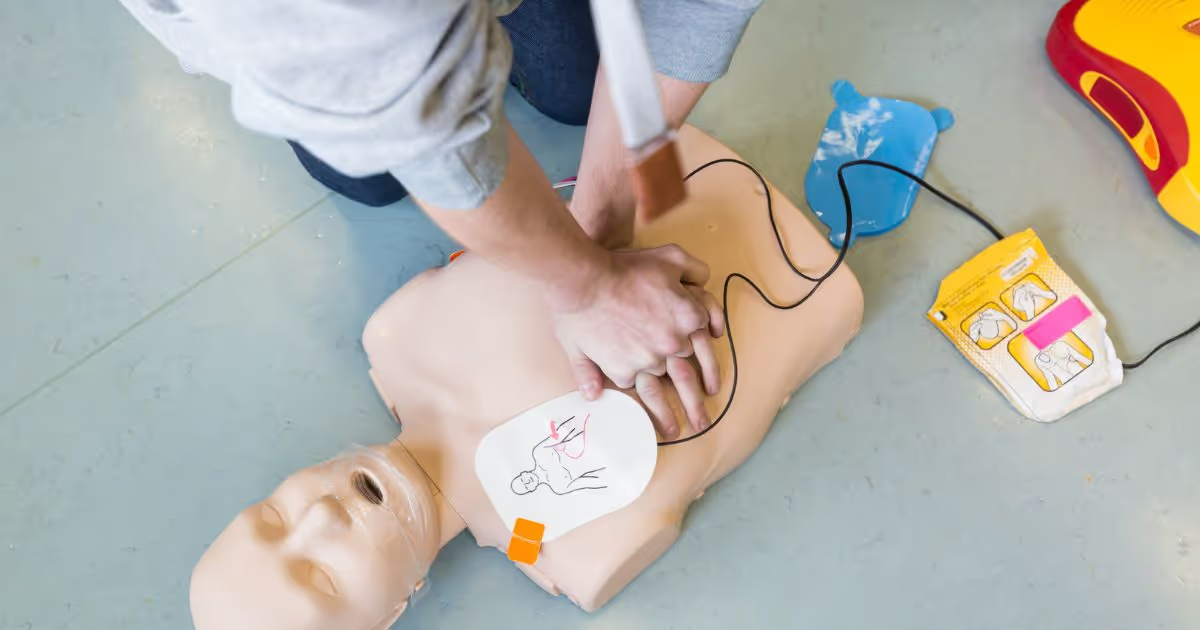Automated External Defibrillators (AED)
You may spot an Automated External Defibrillator (AED) in crowded public places like schools, airports, and malls. It is a lightweight and portable device that can analyze the heart rhythm and deliver an electrical jolt to re-establish normal heart rhythm in people, whose heart suddenly stops pumping blood, depriving their vital organs of oxygen with damaging effects, leading to life-threatening conditions or even death. An AED can help revive someone from sudden cardiac arrest. With the correct and effective use of AED and high-quality cardiopulmonary resuscitation (CPR), survival from cardiac arrest will be higher.
How to operate an AED on an unconscious person
- Call the person loudly or tap on the shoulder to see if the person is responsive.
- If the person appears unresponsive, check if he/she is breathing and has a pulse.
- If the person is not breathing or has no pulse, call 1669 for emergency assistance.
- Turn on the AED and follow the step-by-step voice instructions from the device.
- Wipe the chest dry before applying electrode pads to the chest. Tightly place one under the right collarbone and another below the left breast at the side of the body.
- When the AED analyzes and detects shockable heart electrical activity, it will alert you to push the “SHOCK” button. However, before pressing the button, make sure no one is in direct contact with the person; loudly shout: “STAND CLEAR”. If a shock is inappropriate, the AED will not deliver the shock and notify you to perform CPR.
- Start CPR guided by the AED. Repeat the process until the emergency response crew arrives.
An AED for home use
Having an AED at home may provide peace of mind to those at high risk of cardiac arrests, particularly ventricular fibrillation or ventricular tachycardia. However, there are certain factors that you need to consider before installing an AED.
- Price and maintenance of home AEDs.
- Types of cardiac arrest. Consult with your doctor if a home AED is appropriate for your condition.
- If you live alone, having a home AED may not be sensible because you need another person to operate it for emergency assistance.
- If you live with another person, that person must know how to use an AED and have no mobility restriction to get the device when needed.
Tips for buying and maintaining a home AED
- Buy an FDA-approved AED designed for home use.
- Register with the manufacturer right after purchase. Check the manufacturer’s website often for updated information or device recalls. Keep the phone number of the vendor or manufacturer to call in case of device glitches.
- Store your AED in an easy-to-access location. Inform your family and friends where it is and make sure they know how to operate it. Contact First Aid and Health Care Training Centre, Thai Red Cross Society (02-256 4041-2), or a training center near you for AED and basic CPR lessons.
- Inspect your AED often to ensure it is ready for use. Replace the batteries, typically every 4 years.
Article by
Dr Patima Puttaphaisan
Emergency Medicine
Doctor profile
